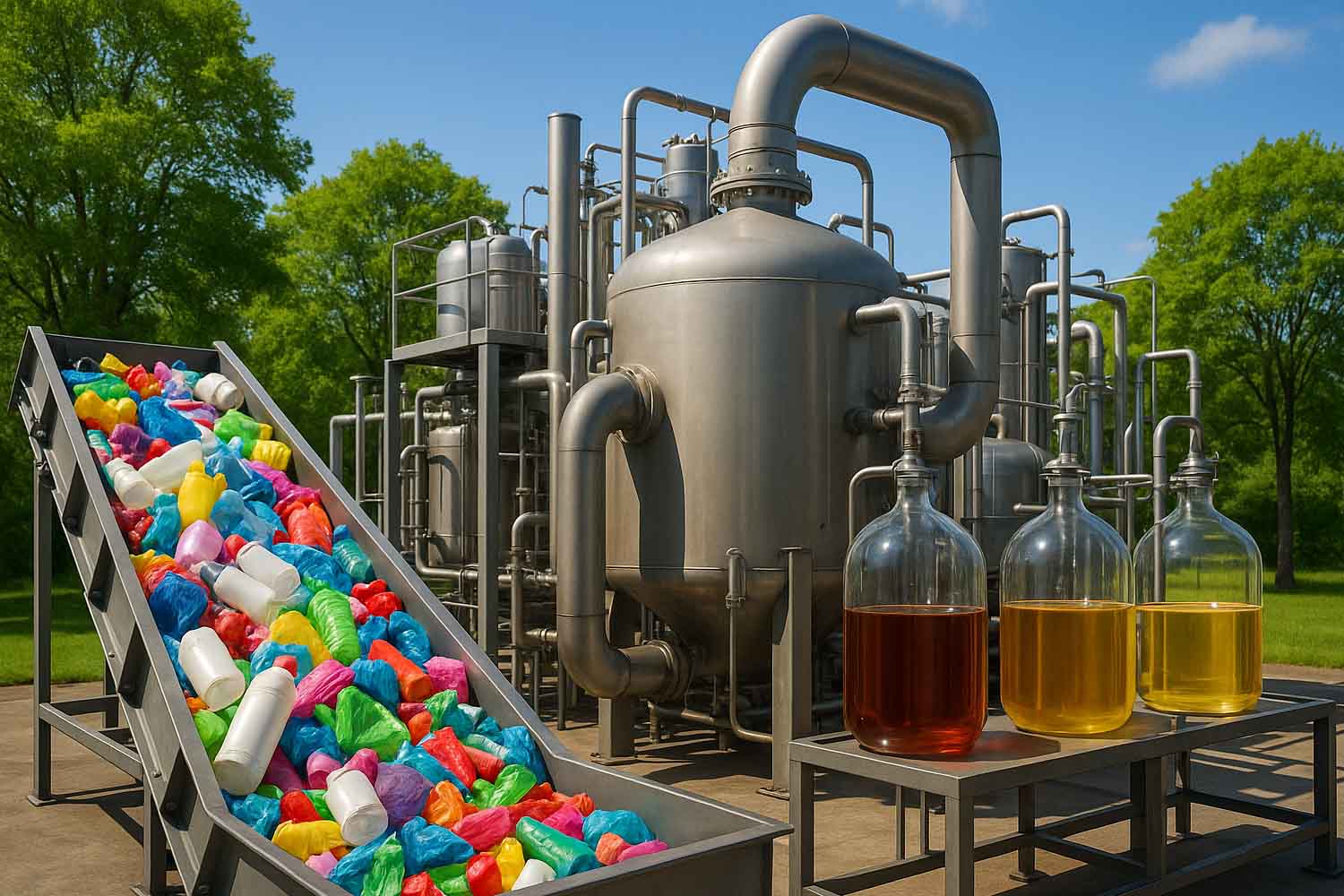Northwestern University scientists have developed a nickel catalyst that can recycle mixed plastics without separation, offering cheaper, cleaner, and more efficient processing.

One of the biggest challenges in plastic recycling has always been the same: before it can be processed, it has to be separated by type. That’s a long, expensive, and often ineffective task—especially when the plastic is dirty, contaminated, or missing its label. But now, new research from Northwestern University promises to turn that old rule on its head.
A team of American scientists has developed a reusable nickel catalyst that can selectively break down polyolefin plastics—such as polyethylene and polypropylene—without the need for prior separation. These are the plastics of daily life: bottles, cling film, grocery bags, packaging. Right now, most of them end up in landfills or in the environment, where they can linger for decades.
How it works
The idea is deceptively simple: a nickel-based molecule that can “cut” the chemical bonds of the most common plastics, turning them into reusable products like oils, waxes, lubricants, or fuels.
The process is called hydrogenolysis. Using hydrogen and this new catalyst, polymers split into smaller fragments. And here’s the kicker: it happens at lower temperatures (around 570°F / 300°C instead of the 750°F / 400°C of traditional methods), with less pressure and much higher efficiency.
Even more surprising, the catalyst stays stable when mixed with problematic materials such as PVC. Normally, polyvinyl chloride ruins everything—it poisons catalysts and makes entire batches of plastic unrecyclable. This time, the opposite happens: PVC actually boosts the chemical reaction.
As Yosi Kratish, one of the study’s authors, put it:
“Adding PVC to the mix is usually forbidden. But in our case it speeds everything up. Even we didn’t expect that.”
Why this matters
This discovery could eliminate one of the biggest bottlenecks in recycling: the tedious need to separate waste piece by piece. That’s the step where the system often breaks down, particularly with plastics that are dirty or unlabeled. Even small amounts of the “wrong” material can ruin a whole load.
With this technology, mixed plastics can be processed directly, with far fewer worries about contamination. The benefits ripple outward: lower processing costs, less waste, better energy efficiency thanks to milder conditions, and higher-value outputs—not just recycled plastics, but also oils, waxes, and fuels.
And there’s another twist: the catalyst can be easily regenerated with a low-cost compound called alkylaluminum, and reused across multiple cycles without losing effectiveness. Unlike noble-metal catalysts (platinum, palladium), nickel is abundant and affordable—an essential condition for scaling up.
From waste to resource
The timing couldn’t be more urgent. Plastic pollution is still surging, particularly from single-use items. Studies estimate that over 220 million tons (200 million metric tons) of polyolefins are produced every year. Yet global recycling rates remain stuck between 1% and 10%.
Behind those numbers lies chemistry itself: polyolefin bonds are stubbornly strong, difficult to break apart. Most of the material is dumped in landfills, where it can take decades to degrade, shedding microplastics along the way.
With the new nickel catalyst, though, these plastics can be given a second life—simply, efficiently, and without endless sorting.
The research, published in Nature Chemistry, was led by Tobin Marks, a professor at Northwestern University and widely regarded as one of the world’s top experts in catalysis. His team included researchers from Purdue University, the Ames National Laboratory, and the Trienens Institute for Sustainability and Energy.
Source: Nature Chemistry
